

Introduction
The X100VI is the latest version of Fujifilm’s now classic series of fixed focal length, premium compact cameras. It effectively replaces the four-year-old X100V model, which became something of a TikTok sensation in the last couple of years and was subsequently almost impossible to buy.
It has a 40.2 megapixel, APS-C sized, X-Trans CMOS 5 HR back-side illuminated (BSI) sensor and X-Processor 5 image processing engine which is twice as fast as the X Processor 4 found in the X100V, and an extended ISO range of 64-51,200.
This represents a big megapixel increase from the 26.1mp sensor used in the X100V. Also ISO 125, which was an extended sensitivity option on the previous model, is now available natively on the X100VI.
It is capable of recording 6.2K/30p and DCI 4K video internally at up to 60p in 4:2.2 10-bit via HDMI for up to 45 minutes. High-speed 1080/240p is also available.
A fixed 23mm f/2.0 lens offers a classic focal length of 35mm (35mm equivalent), making it an ideal camera for street photography and the like. The lens features an optical design that includes two aspherical elements for greater sharpness and clarity.
It offers the ability to focus closely at 10cm from your subject with greater sharpness when shooting wide-open, and a Super EBC coating has been applied to help suppress lens flare and ghosting.
The lens is still exactly the same size as previous lenses and is therefore still compatible with the legacy WCL/TCL conversion lenses, whilst retaining its internal 4-Stop ND filter.
It can shoot blackout-free at 20fps with continuous phase-detect auto-focus and auto-exposure when using the electronic shutter with a 1.29x crop applied and offers 15fps continuous shooting when using the mechanical shutter.
This camera has a phase-detection autofocus system which offers 117 selectable points that cover virtually the entire sensor area and it can automatically detect animals, birds, cars, motorcycles, bicycles, airplanes, trains, insects, and drones thanks to the X-Processor 5’s AI deep learning capabilities.
Other key features include 5-axis in-body image stabilisation (IBIS) which provides up to 6 stops of compensation, the brand new Reala Ace film simulation mode, an Advanced Hybrid Viewfinder with a combined 0.52x OVF and 3.69m-dot OLED EVF, a two-way tilting 3.0-inch 1.62m-dot LCD touchscreen and a four-stop ND filter that works for both stills and video.
It can be made weather-resistant when paired with the optional AR-X100 Adapter Ring and PRF-49 weather-sealing protection ring.
The Fujifilm X100VI is available from March 2024 in either Black or Silver priced at £1599 / $1599 / €1800 for the camera body only in the UK, US and Europe respectively. It is designed and manufactured in China.
To celebrate Fujifilm’s 90th anniversary, an X100VI Limited Edition model is also available, limited to 1,934 units worldwide. These limited-edition models are individually numbered and delivered in a special box with strap, soft release button and history cards. The camera body is engraved with the original Fujifilm corporate brand logo from 1934, along with the unique serial number.
Ease of Use
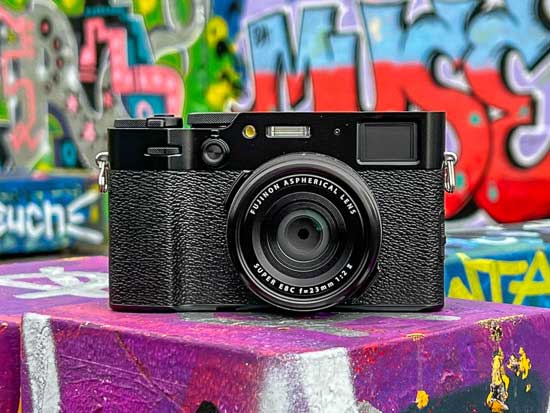 |
I first used (and bought) the original X100 camera way back in 2011, just as smartphones were getting into their all-conquering stride. Fast forward 13 years, and seemingly very little has changed with the release of the sixth-generation X100VI, at least externally.
It’s fair to say that if you’re a long-time user of the X100-series than you won’t notice too many major differences between all of the models as regards to their in size, weight or control layouts.
This new model still shares the very similar svelte, stylish retro DNA of the X100, just continuously refined by Fujifilm as they’ve worked their way through the X100, X100S, X100T, X100F, X100V and now the X100VI.
Each one has shared the same core characteristics of a large APS-C sensor and a 23mm f/2 fixed lens, and the new 2024 version is no different in either of these respects.
The roughly two-year life-span of each new X100 release was interrupted by Covid, so the X100VI is effectively replacing a 4-year-old camera.
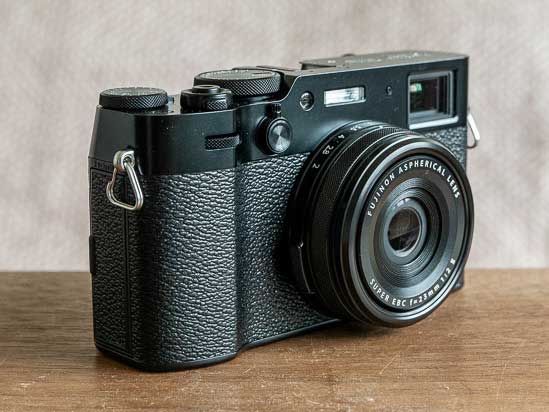 |
Outwardly Fujifilm have played things very safe, as you’d be hard-pressed to tell the difference between the VI and V when looking at them side-by-side from any angle.
This new version is ever so slightly deeper (by 2mm!) and it’s heavier by 43g than its predecessor, a necessary increase due to the inclusion of in-body image stabilisation (IBIS) for the very first time on an X100-series camera.
IBIS makes it easier to hand-hold the camera and still get sharp results, providing around 6 stops of compensation for both stills and video (5.5 stops when using the optical viewfinder), greatly increasing its versatility in low-light situations where its predecessor may have struggled.
The new X100VI concentrates on delivering sheer resolution and high levels of detail by utilising exactly the same 40-megapixel X-Trans CMOS 5 HR sensor that first made its debut in the Fuji X-series camera range with the X-H2.
This is a BSI (back-side illuminated) sensor design that has much more of a focus on detail and resolution than out-and-out speed.
It offers a big increase in resolution compared to the X100V, allowing you to crop much more aggressively than before, or to make bigger prints at similar resolutions.
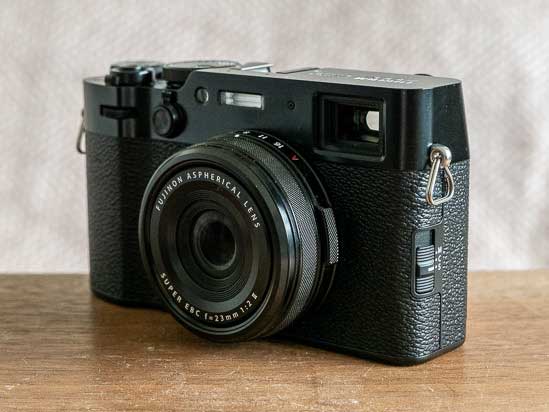 |
The X100VI offers exactly the same burst shooting rates as the X-T5 mirrorless model. They can both shoot at 20fps when using the electronic shutter with a 1.29x crop applied, and both offer the same 15fps continuous shooting speed when using the mechanical shutter.
The buffer size is 117 JPEGs or 52 compressed RAW files before the continuous shooting rate starts to slow down.
To help with capturing the precise moment, the X100VI has a clever Pre-shot burst shooting mode, with the camera constantly filling the buffer while you half-press the shutter button, and then keeping the most recent 20 frames taken 0.5-1 seconds before a full press of the shutter button, eliminating any camera and human-added delay. Note that this feature only works with the electronic shutter.
The X100VI actually has two kinds of shutter, mechanical and electronic. When using its mechanical leaf shutter, it has a top shutter-speed limit of 1/4000th second in all shooting modes.
It considerably improves the fastest shutter speed for the electronic shutter by 2.5 stops, from 1/32,000 sec on the previous generation X100V to a remarkable 1/180,000 sec on the X100VI.
This allows you to leave the aperture wide open in very bright conditions such as a sunny beach or a ski slope, or to capture a split-second motion. You can continue shooting wide-open with fast aperture lenses in the brightest of conditions without having to resort to fitting a glass ND filter or using an external flash and lights.
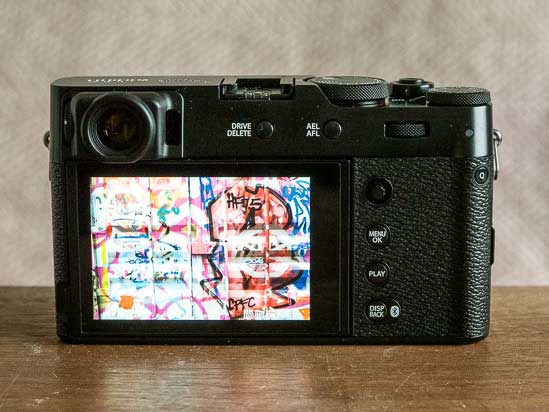 |
It’s all very well being able to record at 20fps, but unless the camera can quickly, accurately and reliably focus on whatever fast-moving subject you’re trying to capture, it’s all for nothing.
Thankfully, although the new X-T5 has the same hybrid autofocus system with up to 117 selectable phase detection and and contrast detections points as its predecessor, Fujifilm have made a couple of significant improvements to make it the best X100-series AF system yet.
Chief amongst these is the inclusion of subject-based computational AI, with the X100VI being able to automatically detect animals, birds, cars, motorcycles, bicycles, airplanes, trains, insects, and drones.
You do have to specifically choose which of those you want to track from the Subject Detection Setting menu, but you can easily register different settings to the camera’s various custom modes.
Turning this feature on resulted in a super-high hit rate in terms of auto-focusing, with the camera often able to focus on the subject before we’d even spotted it ourselves.
The improved autofocus prediction algorithm and particularly the subject detection modes help to ensure that the vast majority of your images are sharp.
 |
The 40 megapixel sensor also allows the X100VI to record 6.2K/30p video with a modest 1.23x crop recorded in 4:2:2 10-bit internally.
It supports DCI 4K/60p recording at up to 30p from the sensor’s full with or at up to 60p with a 1.14x crop, and can shoot 1080/240p slow-motion footage. It also offers the F-Log 2 profile with up to 14+ stops of dynamic range.
Combined with a compatible HDMI recording device from Atomos or Blackmagic Design, 12-bit RAW video output can be recorded as Apple ProRes RAW or Blackmagic RAW.
There’s also a digital zoom function that uses the camera’s 40.2MP sensor to deliver up to 2x of digital zoom with little to no loss in resolution when recording video in 4K.
Sadly, the the X100VI doesn’t have a Still/ Movie switch for changing between these modes, as on the X-T5 and other X-series models. Instead the Movie mode is still rather buried away at the end of the Drive menu, which has always been rather incongruous.
The camera does at least swap between dedicated in-camera menu systems when you change modes, so you don’t have to scroll through excessive video options when all you want to do is photography, and vice versa, and the menu system for both disciplines is really well laid out.
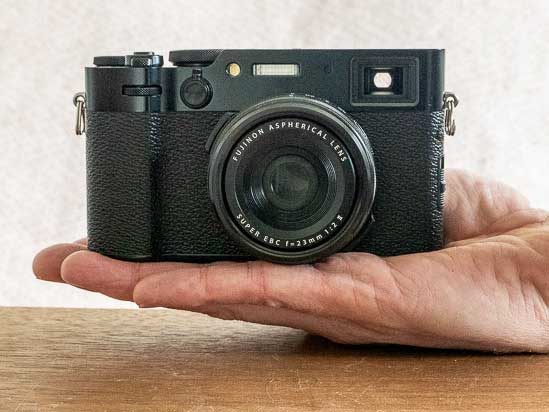 |
A nice touch is that the front and rear control wheels can be used quietly in movie mode to make changes to exposure settings, even during capture. In conjunction with the touchscreen menu, most other key video controls such as white balance and image stabilisation can be adjusted too.
The camera is now equipped with a tracking AF function during movie recording – just tap the subject on the LCD screen and the camera will automatically keep it in focus.
Note that although its more well-appointed for video, there is still no full size HDMI port or 3.5mm headphone socket on the X100VI.
The X100VI has exactly the same 1.62M dot LCD touchscreen as its predecessor, a 2-way tilting unit that makes it easier to shoot at both waist-level and whilst holding the camera above your head.
It can now be tilted slightly further down to 45˚ and pulled slightly further away when turned upwards, but you still can’t tilt it out to the side, which would have been ideal for video use.
In order to smooth over any objections to the tilting screen, Fujifilm have gone to great lengths to effectively hide it by making an incredibly thin screen (just 4.4mm) that sits flush against the rear of the camera. Indeed, if it wasn’t for the slight indent and tab in the bottom left corner that’s used for pulling it outwards, you’d probably think that the screen was fixed in place.
 |
Another key feature of the X100 series that has been retained is the hybrid viewfinder. This long-standing feature offers a frame coverage of 95% and 0.52x magnification.
Similarly, the electronic viewfinder is the same too, being 0.5-inch in size whilst offering 3.69M dot resolution, 0.66x magnification and a refresh rate of 100fps.
Just like the model before it, the Fuji X100VI is weather-sealed, something that further adds to its versatility as a go-anywhere street camera.
There is still quite a big catch, though – whilst the camera body is fully weather-sealed out of the box, the lens isn’t, requiring the purchase and fitting of the optional PRF-49 protective filter with the AR-X100 adapter ring to fully protect it from the elements.
Fujifilm have said that they didn’t want to make the camera bigger and more expensive by making the lens weatherproof out-of-the-box. While this is commendable, having to purchase expensive accessories that make the camera bigger and heavier isn’t exactly an ideal solution for anyone who want to shoot in the rain or dusty environments.
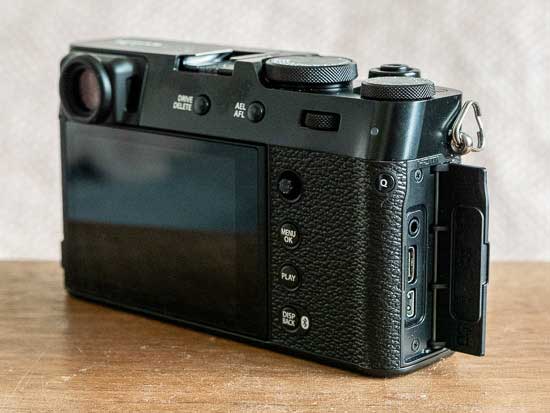 |
The X100VI offers a total of 20 Film Simulation modes, including the brand new ‘REALA ACE’ mode, which makes its X-series debut on the X100VI and provides more faithful colour reproduction coupled with high-contrast tonality.
This camera features both built-in wi-fi and Bluetooth connectivity. The latter option creates a constant, low-power connection between the camera and a smartphone/tablet to transfer images and video using the Fujifilm Camera Remote smartphone app.
The former allows you to remotely control the camera via either a 2.4Ghz or 5GHz wi-fi connection using a smartphone or tablet and the Fujifilm app, and transfer images and video from one device to the other.
Battery life has been marginally improved despite using exactly the same NP-W126S battery as the X100V and the X100F, up from 350/420 frames when using the EVF/OVF to 360/450 frames on the X100VI.
The X100VI can also be powered and charged via a USB-C connection, which is useful if you’re out and about and have a compatible power-bank to plug the camera into. It uses the newer Type C standard which also allows it to be used as a port for a external headphones, using an adapter.
Rather infuriatingly, the single SD memory card slot that’s housed in the battery compartment on the bottom of the camera still only supports the slower UHS-I standard, rather than UHS-II, a surprising omission on a 2024 camera.
Image Quality
All of the sample images in this review were taken using the 40.2 megapixel Fine JPEG setting, which gives an average image size of around 18Mb.
The Fujifilm X100VI produced images of outstanding quality. It records noise-free JPEG images from ISO 64 up to ISO 3200, with a little noise at ISO 6400 and more visible noise at the faster settings of ISO 12800 and 25600 (ISO 51200 is best avoided), an amazing performance for a camera with a 40 megapixel APS-C sensor. The RAW files were also excellent, exhibiting more noise than their JPEG counterparts but still producing very usable images from ISO 64-6400.
The night photograph was excellent, with the maximum shutter speed of 30 seconds being long enough for most after-dark shots, and the Bulb mode allowing much longer exposures if required. The Dynamic Range and HDR settings subtly improve detail in the shadows and highlights, while the extensive range of Film Simulation modes hark back to a bygone era, and the Advanced Filters allow you to have a little fun with your images in-camera.
Noise
There are 11 full ISO settings available on the Fujifilm X100VI for JPEGs and RAW files. Here are some 100% crops which show the noise levels for each ISO setting.
| JPEG | RAW |
|
ISO 64 |
ISO 64 |
 |
 |
|
ISO 125 |
ISO 125 |
 |
 |
|
ISO 200 |
ISO 200 |
 |
 |
|
ISO 400 |
ISO 400 |
 |
 |
|
ISO 800 |
ISO 800 |
 |
 |
|
ISO 1600 |
ISO 1600 |
 |
 |
|
ISO 3200 |
ISO 3200 |
 |
 |
|
ISO 6400 |
ISO 6400 |
 |
 |
|
ISO 12800 |
ISO 12800 |
 |
 |
|
ISO 25600 |
ISO 25600 |
 |
 |
|
ISO 51200 |
ISO 51200 |
 |
 |
File Quality
The Fujifilm X100VI has 2 different image quality settings available, with Fine being the highest quality option. Here are some 100% crops which show the quality of the various options, with the file size shown in brackets.
| Fine (18Mb) (100% Crop) | Normal (9.1Mb) (100% Crop) |
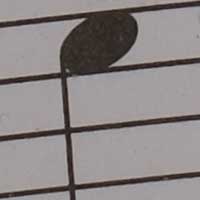 |
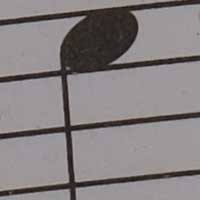 |
| RAW (85.5Mb) (100% Crop) | |
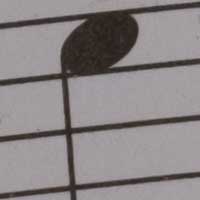 |
Dynamic Range
The Fujifilm X100VI has three dynamic range settings – 100% (on by default), 200%, and 400% – and an Auto setting if you want to let the camera take control.
These settings gradually increase the amount of detail visible in the shadow and highlight areas, with the side-effect of more noise appearing in the image. Note that you can’t actually turn this feature off. All three settings are available from ISO 500 upwards.
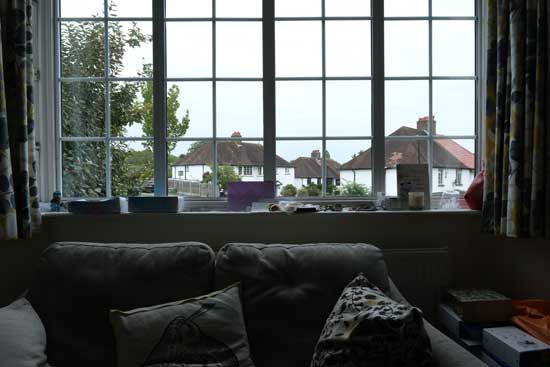
100%
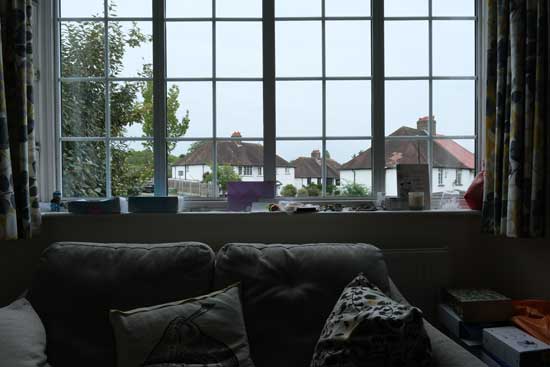
200%
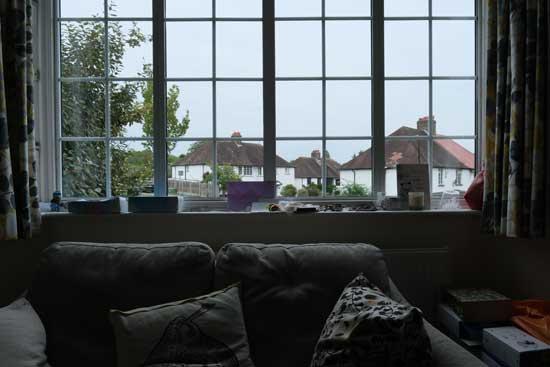
400%
HDR
The Fujifilm X100VI has a High Dynamic Range mode with five different settings – AUTO, 200%, 400%, 800%, 800%+. The camera takes three shots with different exposures, changing the shutter speed for each one, and then combining them in-camera.
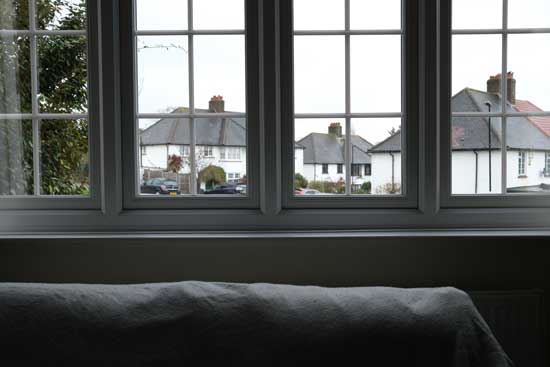
Off
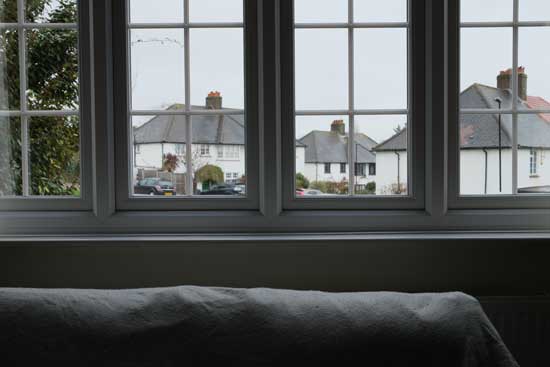
Auto
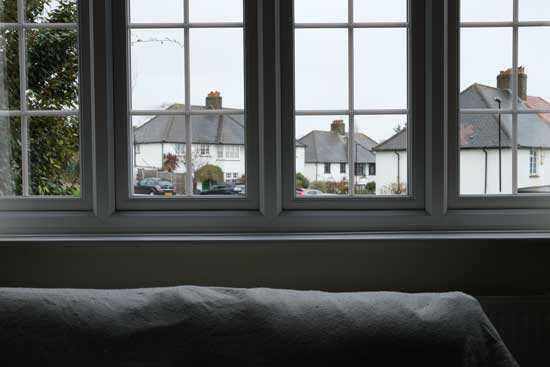
200%
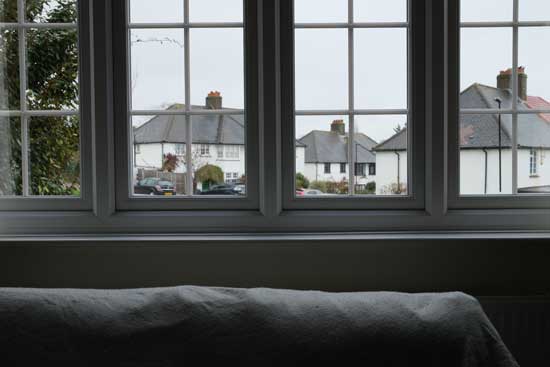
400%
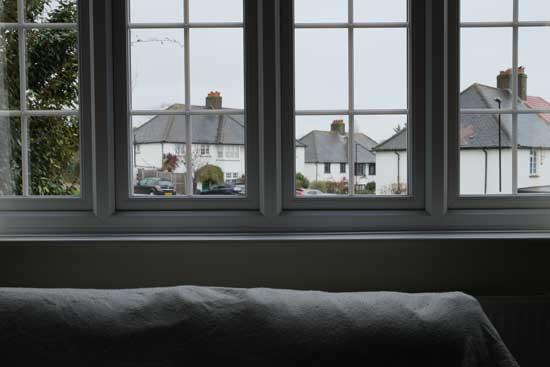
800%

800+%
Film Simulations
The Fujifilm X100VI offers 20 different film simulation modes to help replicate the look of your favourite film stock from the past, including the brand new Reala Ace.

Provia / Standard

Velvia / Vivid

Astia / Soft

Classic Chrome

Reala Ace

Pro Neg. Hi

Pro Neg. Standard

Classic Neg.

Nostalgic Neg.

Eterna / Cinema

Eterna Bleach Bypass

Acros

Monochrome

Sepia
Advanced Filters
The Fujifilm X100VI offers 13 different creative filter effects which are found in the Drive menu.

Toy Camera

Miniature

Pop Color

High-Key

Low-Key

Dynamic Tone

Soft Focus

Partial Color (Red)

Partial Color (Orange)

Partial Color (Yellow)

Partial Color (Green)

Partial Color (Blue)

Partial Color (Purple)
Multiple Exposure
The Fujifilm X100VI’s Multiple Exposure mode combines up to 9 different images together in-camera to create one composite image, with four different ways of combining them – Additive, Average, Bright, Dark.
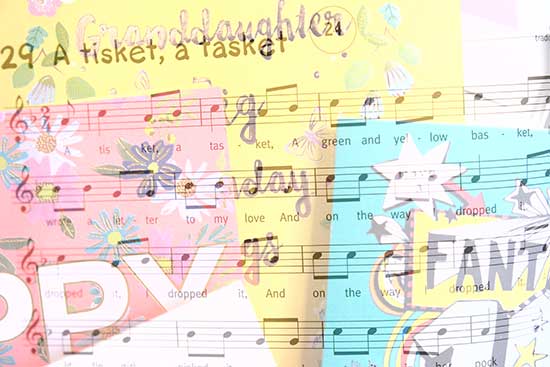
Sample Images
This is a selection of sample images from the Fujifilm X100VI camera, which were all taken using the 40 megapixel Fine JPEG setting. The thumbnails below link to the full-sized versions, which have not been altered in any way.
Sample RAW Images
The Fujifilm X100VI enables users to capture RAW and JPEG format files. We’ve provided some Fujifilm RAW (RAF) samples for you to download (thumbnail images shown below are not 100% representative).
Sample Movies & Video
This is a sample 6.2K movie at the quality setting of 6240×3150 pixels at 30 frames per second. Please note that this 15 second movie is 108Mb in size.
This is a sample 4K movie at the quality setting of 3840×2160 pixels at 60 frames per second. Please note that this 16 second movie is 107Mb in size.
This is a sample Full HD 8x slow-motion movie at the quality setting of 1920×1080 pixels at 240 frames per second. Please note that this 110 second movie is 272Mb in size.
Product Images


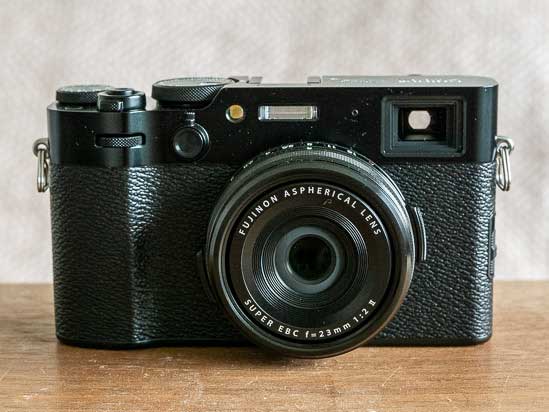


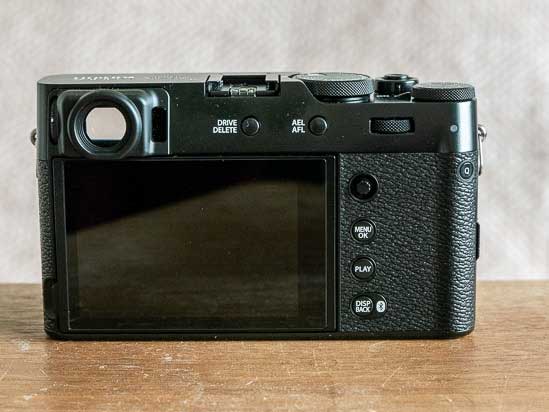
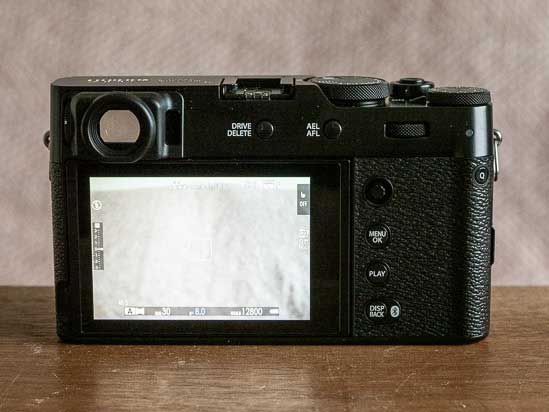

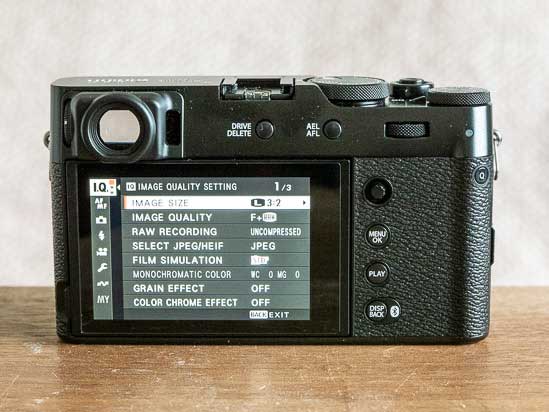
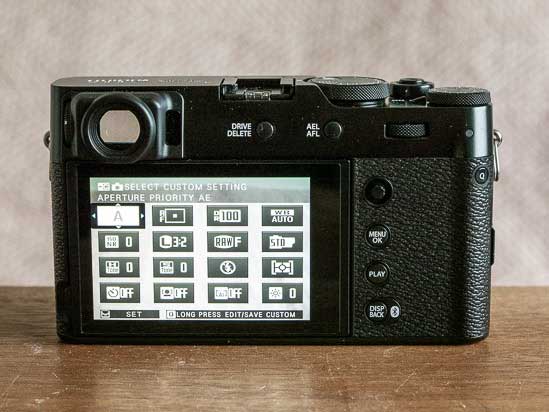
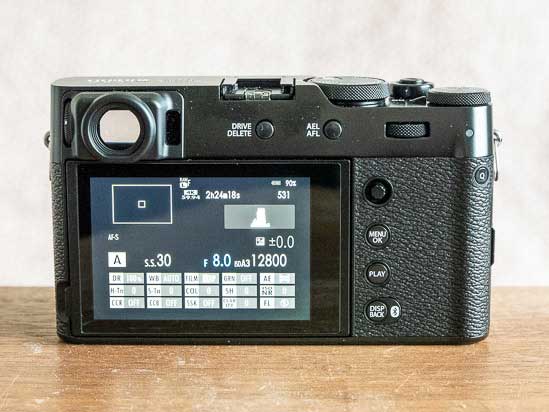
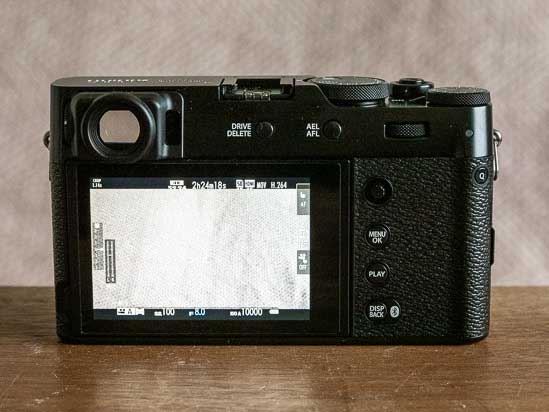

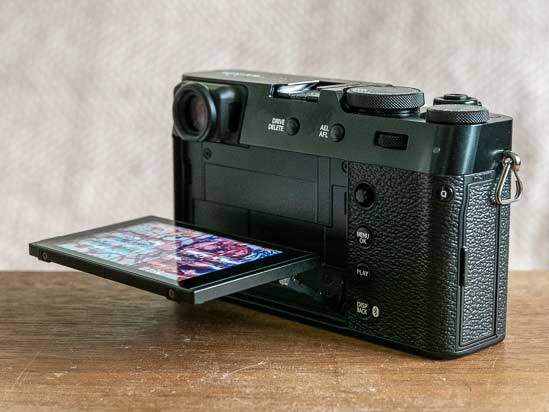
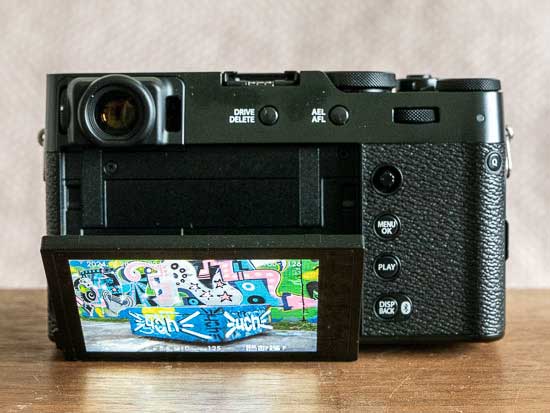

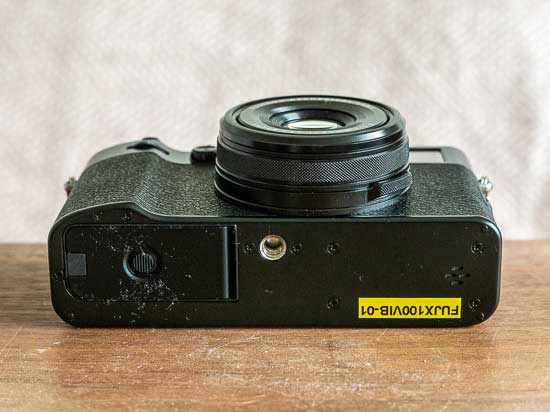
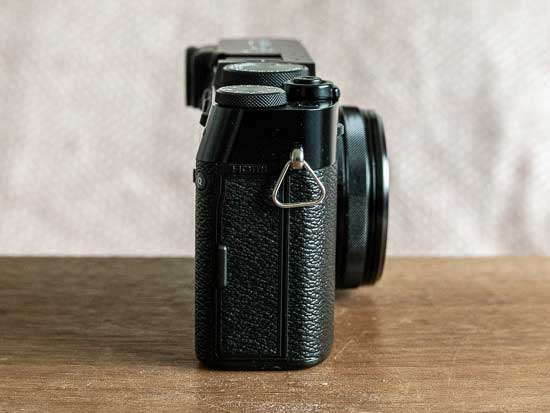
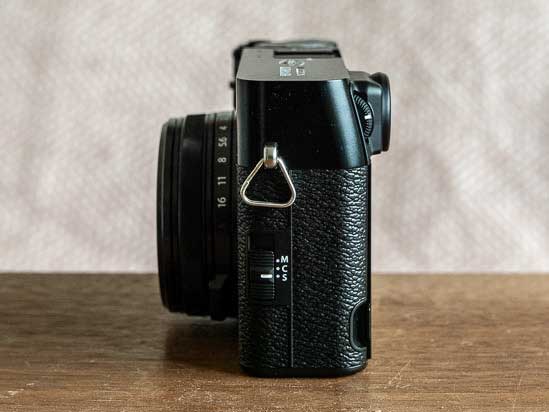

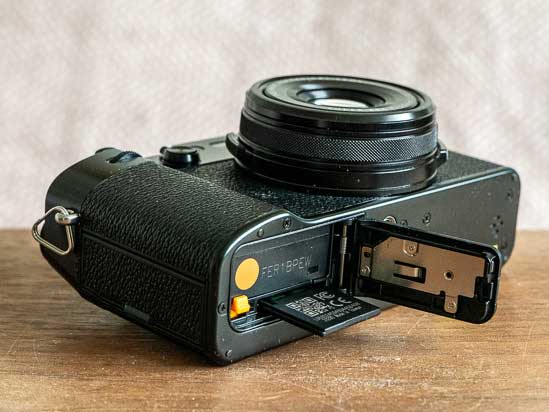
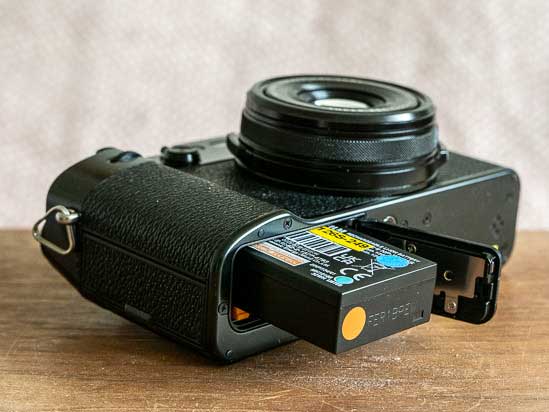

Conclusion
Thirteen years have passed since the debut of the original X100, and here we are with the launch of the 6th generation, which looks remarkably similar to all of its predecessors.
Fujifilm have certainly stuck with the tried and tested formula that has served the series so well, and who can blame them when the X100V has been one of, if not the, best selling camera of of the last two years?
To be fair to Fujifilm, they could have chosen to just sell as many X100Vs as they could produce in order to satisfy the seemingly insatiable demand that’s been fanned by social media influencers.
Instead, they’ve launched an entirely new version that is a definite improvement on the old one, whilst not rocking the boat too much so as to put off all those would-be buyers who couldn’t get hold of the X100V for love nor money.
By far the best new feature on the Mark VI model is in-body image stabilisation (IBIS), which makes the camera much more versatile in low light than its predecessor. The fact that Fujifilm’s engineers have managed to incorporate it with only a very slight increase in size and weight is the proverbial icing on the cake.
The other significant change is the incorporation of Fujifilm’s latest image sensor and processor combo, no doubt made to help keep manufacturing costs down across the camera range.
The 40 megapixel sensor offers the twin benefits of much greater resolution and 6K video, whilst the processor significantly introduces subject-recognition AF, all features previously seen on other X-series models but never featured before on the X100.
Whether you actually need bird-detection AF on a camera with a 35mm fixed focal length lens is perhaps another matter entirely, as is the fact that the video mode continues to seem like an after-thought on what is very much a stills-focused camera, and we can’t really forgive the UHS-I SD card slot on what is after all a new 2024 camera.
With a reported 1/2 million pre-orders in China alone, it’s clear that the new VI is certainly set to continue the recent enormous success of the X100-series. It may represent an evolution of the blueprint rather than a revolution, but that hardly seems to matter when just producing enough X100s of any kind seems to be the order of the day…
| Ratings (out of 5) | |
|---|---|
| Design | 5 |
| Features | 4.5 |
| Ease-of-use | 4.5 |
| Image quality | 5 |
| Value for money | 4 |
Main Rivals
Listed below are some of the rivals of the Fujifilm X100VI.
The new Canon PowerShot G5 X Mark II is a premium compact camera that’s clearly been re-designed to take on the all-conquering Sony RX100 series of cameras whilst offering some class-leading features of its own, including a longer zoom lens, touchscreen interface and bigger grip. Discover what’s new in our Canon PowerShot G5 X Mark II review, complete with full-size sample images and videos…
Canon’s PowerShot G7 X Mark III is a brand new compact camera that offers a lot of bang for your buck, for both stills photographers and vloggers alike. Find out just what the latest generation of this camera is capable of by reading our in-depth Canon PowerShot G7 X Mark III review, complete with full-size sample JPEG and Raw images…
The new Fujifilm X-S20 aims to be a hybrid mirrorless camera for the masses, offering 6K video, 26 megapixel stills, a specific shooting mode for vloggers and long battery life, all in a small, well-built body. Is the XS20 the ultimate do-it-all camera? Find out now by reading our in-depth Fuji XS20 review complete with full-size sample images and videos.
The Fujifilm X-T5 is the successor to the very popular X-T4 which was released in 2020, principally adding a new 40 megapixel sensor, 160 megapixel Pixel Shift Multi-Shot mode, 6.2K video recording and better auto-focusing. Can the new XT5 improve on what was already an outstanding camera? Find out now by reading our in-depth Fujifilm X-T5 review…
As its name suggests, the new X100V represents the fifth generation of Fujfilm’s now classic 35mm fixed lens premium compact camera series. The new Fuji X100V uses exactly the same 26 megapixel sensor and X-Processor 4 as the rest of the latest X-series cameras, and also adds weather-proofing, a revised lens design, tilting LCD touchscreen and 4K video recording into the rich mix. Read our in-depth Fujifilm X100V review now, complete with full-size sample images and videos…
The D-Lux 7 is Leica’s brand new premium compact camera, featuring a relatively large Micro Four Thirds sensor and a fast 3.1x zoom lens. Is this the best pocket camera on the market? Find out now by reading our Leica D-Lux 7 review, complete with full-size sample images.
The Leica Q3 is a compact camera like no other, with a 60 megapixel full-frame sensor, 8K/30p video recording, hybrid AF system and a 28mm f/1.7 fixed lens all housed in a traditional body. Is this the ultimate tool for street and landscape photography? Find out now by reading our in-depth Leica Q3 review, complete with full-size sample photos and videos…
The Panasonic Lumix LX100 II is the successor to one of our favourite compact cameras of all time, the ahead-of-the-game LX100, which was launched way back in 2014. Read our in-depth Panasonic LX100 II review with sample JPEG, RAW and video files to find out if we rate it just as highly as the original…
The new GR III is a significant update of Ricoh’s popular GR premium compact camera series, offering a 28mm fixed focal length lens, 3-axis image stabilisation system, large 24 megapixel APS-C sensor, 1080/60p video recording, 3 inch LCD touchscreen, flash hotshoe, and built-in wifi and bluetooth connectivity. Read our in-depth Ricoh GR III review complete with full-size JPEG and RAW sample images to find out if this camera still has what it takes in 2019…
Review Roundup
Reviews of the Fujifilm X100VI from around the web.
Out of all the cameras that Fujifilm has produced during the past 12 years, the X100 series and the X-Pro series are the cameras that have always been my tools of the trade. I’ve seen the two lines grow more complete with every new iteration, to the point where I thought that Fujifilm couldn’t improve upon the X100V. It has been that perfect to me.
Read the full review »
For the past few days, I’ve been testing a fashion accessory: the Fujifilm X100VI. I’d like to otherwise call it the best toy camera of 2024. To be frank, the deepest emotions within me want to label this camera as the embodiment of the word “meh.” At least, that’s the best way that I can describe the one that I’m using.
Read the full review »
The Fujifilm X100VI, pronounced “Six”, is Fujifilm’s latest X100-series camera. The previous X100V is infamous for a multitude of reasons, notably for combining gorgeous retro styling with modern high-spec digital imaging. It’s been featured on numerous videos, gone viral on TikTok, and due to high demand, has been incredibly hard to find.
Read the full review »
Specifications
| Model name | FUJIFILM X100VI | |
| Image sensor | 23.5mm x 15.7mm (APS-C) X-Trans CMOS 5 HR with primary color filter | |
| Number of effective pixels | 40.2 millions pixels | |
| Sensor Cleaning System | Ultra Sonic Vibration | |
| Image Processing Engine | X-Processor 5 | |
| Storage media | SD Card (-2GB) / SDHC Card (-32GB) / SDXC Card (-2TB) / UHS-I *Please see the Fujifilm website (https://fujifilm-x.com/support/compatibility/cameras/) to check memory card compatibility. |
|
| File format of still image | DCF | Compliant with Design rule for Camera File system (DCF2.0) |
| JPEG | Exif Ver.2.32*1 | |
| HEIF | 4:2:2 10bit | |
| RAW | 14bit RAW (RAF original format) | |
| TIFF | 8bit / 16bit RGB (In-camera Raw Conversion Only) | |
| Number of recorded pixels | [L] | 〈4:3〉 6864 x 5152 〈3:2〉 7728 x 5152 〈16:9〉 7728 x 4344 〈1:1〉 5152 x 5152 〈5:4〉 6432×5152 |
| [M] | 〈4:3〉 4864 x 3648 〈3:2〉 5472 x 3648 〈16:9〉 5472 x 3080 〈1:1〉 3648 x 3648 〈5:4〉 4560×3648 | |
| [S] | 〈4:3〉 3456 x 2592 〈3:2〉 3888 x 2592 〈16:9〉 3888 x 2184 〈1:1〉 2592 x 2592 〈5:4〉 3264×2592 | |
| Panorama[L] | 〈vertical〉2160 x 9600 〈Horizontal〉9600 x 1440 | |
| Panorama[M] | 〈vertical〉2160 x 6400 〈Horizontal〉6400 x 1440 | |
| Lens | Type | FUJINON single focal length lens |
| Focal length | f=23mm (35mm format equivalent : 35mm) | |
| Max. aperture | F2.0 | |
| Lens configuration | 8 elements in 6 groups (includes 2 aspherical elements) | |
| ND filter | Yes (4 stops) | |
| Aperture | F2 – F16 1/3EV step (controlled with 9-blade aperture diaphragm) | |
| Focus range | Approx. 10cm to infinity / 3.9in. to infinity | |
| Conversion lens | WIDE / TELE / OFF | |
| Digital Tele-Converter | 70mm* / 50mm* / 35mm*(Nomal)*35mm fomat equivalent | |
| Sensitivity | Still Image | Standard Output: AUTO1 / AUTO2 / AUTO3 / ISO125~12800 (1/3 step) Extended Output: ISO64 / ISO80 / ISO100 / ISO25600 / ISO51200 |
| Movie | Standard Output: AUTO / ISO125~12800 (1/3 step) Extended Output: ISO25600 |
|
| Exposure control | TTL 256-zone metering / Multi / Spot / Average / Center Weighted | |
| Exposure mode | P (Program AE) / A (Aperture Priority AE) / S (Shutter Speed Priority AE) / M (Manual Exposure) | |
| Exposure compensation | Still | -5.0EV~+5.0EV 1/3EV step |
| Movie | -2.0EV~+2.0EV 1/3EV step | |
| Image stabilizer | Mechanism | Image sensor shift mechanism with 5-axis compensation |
| Compensation Effect | 6.0 stops *based on CIPA standard *Pitch/yaw shake only *When shooting with EVF/LCD |
|
| Digital Image Stabilization | Yes (movie mode only) | |
| IS MODE BOOST | Yes (movie mode only) | |
| Shutter type | Lens Shutter | |
| Shutter speed | Mechanical shutter | P mode: 30sec. to 1/4000sec. A mode: 30sec. to 1/4000sec. S/M mode: 15min. to 1/4000sec. Bulb: up to 60min. |
| Electronic shutter | P mode: 30sec. to 1/180000sec. A mode: 30sec. to 1/180000sec. S/M mode: 15min. to 1/180000sec. Bulb: 1sec. Fixed | |
| Mechanical + Electronic shutter | P mode:30sec. to 1/180000sec. A mode:30sec. to 1/180000sec. S/M mode:15min. to 1/180000sec. Bulb:up to 60min. *Mechanical shutter works until 1/4000sec. |
|
| Movie | 6.2K: 1/4000sec. to 1/24 sec. 4K/DCI4K: 1/4000sec. to 1/24 sec. FHD: 1/4000sec. to 1/24 sec. *Cannot choose slower shutter speed than framerate for some settings. |
|
| Continuous shooting | CH Electronic shutter Approx. 20fps (1.29x Crop) (No. of recordable frames: JPEG 117 frames, Compressed RAW 52 frames, Lossless compressed RAW 35 frames, Uncompressed RAW 17 frames, Compressed RAW + JPEG 25 frames, Lossless compressed RAW + JPEG 22 frames, Uncompressed RAW + JPEG 17 frames) CH Electronic shutter Approx. 13fps (1.29x Crop) (No. of recordable frames: JPEG 146 frames, Compressed RAW 57 frames, Lossless compressed RAW 36 frames, Uncompressed RAW 17 frames, Compressed RAW + JPEG 38 frames, Lossless compressed RAW + JPEG 33 frames, Uncompressed RAW + JPEG 17 frames) CH Electronic shutter Approx. 10fps (1.29x Crop) (No. of recordable frames: JPEG 163 frames, Compressed RAW 59 frames, Lossless compressed RAW 36 frames, Uncompressed RAW 18 frames, Compressed RAW + JPEG 36 frames, Lossless compressed RAW + JPEG 33 frames, Uncompressed RAW + JPEG 17 frames) CH Electronic shutter Approx. 13fps (No. of recordable frames: JPEG 80 frames, Compressed RAW 38 frames, Lossless compressed RAW 24 frames, Uncompressed RAW 17 frames, Compressed RAW+JPEG 25 frames, Lossless compressed RAW+JPEG 18 frames, Uncompressed RAW+JPEG 17 frames) CH Electronic shutter Approx. 8.9fps (No. of recordable frames: JPEG 84 frames, Compressed RAW 38 frames, Lossless compressed RAW 24 frames, Uncompressed RAW 17 frames, Compressed RAW+JPEG 29 frames, Lossless compressed RAW+JPEG 25 frames, Uncompressed RAW+JPEG 17 frames) CH Mechanical shutter Approx. 11fps (No. of recordable frames: JPEG 38 frames, Compressed RAW 33 frames, Lossless compressed RAW 21 frames, Uncompressed RAW 17 frames, Compressed RAW+JPEG 28 frames, Lossless compressed RAW+JPEG 23 frames, Uncompressed RAW+JPEG 17 frames) CH Mechanical shutter Approx. 8.0fps (No. of recordable frames: JPEG 76 frames, Compressed RAW 35 frames, Lossless compressed RAW 21 frames, Uncompressed RAW 17 frames, Compressed RAW+JPEG 28 frames, Lossless compressed RAW+JPEG 23 frames, Uncompressed RAW+JPEG 17 frames) CL Mechanical shutter Approx. 6.0fps (No. of recordable frames: JPEG 97 frames, Compressed RAW 36 frames, Lossless compressed RAW 23 frames, Uncompressed RAW 18 frames, Compressed RAW+JPEG 29 frames, Lossless compressed RAW+JPEG 22 frames, Uncompressed RAW+JPEG 18 frames) CL Approx. 5.0fps (No. of recordable frames: JPEG 110 frames, Compressed RAW 42 frames, Lossless compressed RAW 25 frames, Uncompressed RAW 18 frames) CL Approx. 4.0fps (No. of recordable frames: JPEG 184 frames, Compressed RAW 48 frames, Lossless compressed RAW 26 frames, Uncompressed RAW 19 frames) CL Approx. 3.0fps (No. of recordable frames: JPEG 504 frames, Compressed RAW 57 frames, Lossless compressed RAW 29 frames, Uncompressed RAW 20 frames) Pre-shot Electronic shutter Approx. 20fps (1.29x Crop) (No. of recordable frames: While half press 20 frames, After full press 135 frames, Total 155 frames) Pre-shot Electronic shutter Approx. 13fps (1.29x Crop) (No. of recordable frames: While half press 13 frames, After full press 177 frames, Total 190 frames) Pre-shot Electronic shutter Approx. 10fps (1.29x Crop) (No. of recordable frames: While half press 10 frames, After full press 240 frames, Total 250 frames) Pre-shot Electronic shutter Approx. 11fps (No. of recordable frames: While half press 11 frames, After full press 79 frames, Total 90 frames) Pre-shot Electronic shutter Approx. 8fps (No. of recordable frames: While half press 8 frames, After full press 102 frames, Total 110 frames) *Recordable frames depends on recording media *Speed of continuous shooting depends on shooting environment and shooting frames |
|
| Drive Mode | AE Bracketing | 2 frames / 3 frames / 5 frames / 7 frames / 9 frames *by 1/3EV step, up to ±3EV steps |
| Filmsimulation bracketing | Any 3 types of film simulation selectable | |
| Dynamic Range Bracketing | 100% / 200% / 400% | |
| ISO sensitivity Bracketing | ±1/3EV / ±2/3EV / ±1EV | |
| White Balance Bracketing | ±1 / ±2 / ±3 | |
| Focus Bracketing | AUTO / MANUAL | |
| Multiple Exposure | Yes (Max. 9 frames) / Additive / Average / Bright / Dark | |
| HDR Mode | AUTO / 200% / 400% / 800% / 800% + | |
| Advanced filter | Toy camera / Miniature / Pop color / High-key / Low-key / Dynamic tone / Soft focus / Partial color (Red / Orange / Yellow / Green / Blue / Purple) | |
| Focus | Mode | Single AF / Continuous AF / MF |
| Type | Intelligent Hybrid AF (TTL contrast AF / TTL phase detection AF) | |
| Low-light Performance | Contrast: -2.0EV Phase Detection: -5.0EV |
|
| AF frame selection | Single point AF: 13×9 / 25×17 (Changeable size of AF frame) Zone AF: 3×3 / 5×5 / 7×7 / Custom1-3 from 117 areas on 13×9 grid Wide/Tracking AF: Yes (AF-S: Wide / AF-C: Tracking) All: Yes |
|
| Face/eye detection | Yes | |
| Subject detection | Yes (Animal/Bird/Automobile/Motorcycle&Bike/Airplane/Train) | |
| Flash | Built-in flash | Auto flash [Super Intelligent Flash] Guide Number: approx. 4.4 (ISO100・m) Effective range(ISO1600): approx. 30cm – 7.4m/1.0ft. – 24.3ft. Sync. Mode: 1st Curtain / 2nd Curtain Flash Mode: TTL (TTL AUTO / STANDARD / SLOW SYNC. ) / MANUAL / COMMANDER / OFF |
| Shoe mount flash | Sync. Mode: 1st Curtain / 2nd Curtain Flash Mode: TTL (TTL AUTO / STANDARD / SLOW SYNC. ) / MANUAL / MULTI *When EF-X500 is set / OFF |
|
| Hot shoe | Yes (Dedicated TTL Flash compatible) | |
| Viewfinder (Hybrid viewfinder) | OVF: Reverse Galilean viewfinder with electronic bright frame display Coverage of Frame Area v.s. Capturing Area: approx. 95% Magnification: approx x0.52 |
|
| Viewfinder | EVF: 0.5 inch OLED Color Viewfinder, Approx. 3.69 million dots Coverage of Viewing Area vs. Capturing Area: Approx. 100% Eyepoint: Approx. 16.8mm (from the Rear End of the Camera’s Eyepiece) Diopter Adjustment: -4~+2m-1 Magnification: 0.66x with 50mm Lens (35mm Equivalent) at infinity and Diopter set to -1.0m-1 Diagonal Angle of View: approx. 32° (Horizontal angle of view: approx. 27° ) Built-In Eye Sensor |
|
| LCD monitor | 3.0 inch tilting touch screen color LCD monitor Aspect Ratio: 3:2 Dots: Approx. 1.62 million dots |
|
| Touch Screen Mode | Shooting Mode | Shooting, AF, Focus Area, OFF, Double Tap Setting (ON/OFF), Touch Function Setting (ON/OFF), EVF Touch Screen Area Setting |
| Playback Mode | Swipe, Pinch-in / Pinch-out, Double-tap, Drag | |
| Movie recording | File format | MOV: HEVC/H.265, Linear PCM (Stereo sound 24bit / 48KHz sampling) MPEG-4 AVC/H.264, Linear PCM (Stereo sound 24bit / 48KHz sampling) MP4: MPEG-4 AVC/H.264, AAC |
| Movie compression | Long GOP | |
| File size Frame rate Bitrate |
[6.2K(16:9)] 6240 x 3150 29.97p/25p/24p/23.98p 200Mbps/100Mbps/50Mbps [DCI4K HQ(17:9)] 4096 x 2160 29.97p/25p/24p/23.98p 200Mbps/100Mbps/50Mbps [4K HQ(16:9)] 3840 x 2160 29.97p/25p/24p/23.98p 200Mbps/100Mbps/50Mbps [DCI4K(17:9)] 4096 x 2160 59.94p/50p/29.97p/25p/24p/23.98p 200Mbps/100Mbps/50Mbps [4K(16:9)] 3840 x 2160 59.94p/50p/29.97p/25p/24p/23.98p 200Mbps/100Mbps/50Mbps [Full HD(17:9)] 2048 x 1080 59.94p/50p/29.97p/25p/24p/23.98p 200Mbps/100Mbps/50Mbps [Full HD(16:9)] 1920 x 1080 59.94p/50p/29.97p/25p/24p/23.98p 200Mbps/100Mbps/50Mbps [Full HD(17:9) High speed rec.] 2048 x 1080 240p/200p/120p/100p 200Mbps (recording) [Full HD(16:9) High speed rec.] 1920 x 1080 240p/200p/120p/100p 200Mbps (recording) *For recording movies, use a SD memory card with UHS Speed Class 3 or higher. *Selectable bitrate will be changed depends on the setting. *Recording time can become short depending on the temperature and/or shooting conditions |
|
| Film simulation mode | 20 modes (PROVIA/Standard, Velvia/Vivid, ASTIA/Soft, Classic Chrome, REALA ACE, PRO Neg.Hi, PRO Neg.Std, Classic Neg., Nostalgic Neg., ETERNA/Cinema, ETERNA BLEACH BYPASS, ACROS, ACROS + Ye Filter, ACROS + R Filter, ACROS + G Filter, Black & White, Black & White + Ye Filter, Black & White + R Filter, Black & White + G Filter, Sepia) | |
| Monochromatic Color | Yes | |
| Grain Effect | Roughness | STRONG, WEAK, OFF |
| Size | LARGE, SMALL | |
| Color Chrome Effect | STRONG, WEAK, OFF | |
| Color chrome Blue | STRONG, WEAK, OFF | |
| Smooth Skin Effect | STRONG, WEAK, OFF | |
| Dynamic range setting | Still | AUTO / 100% / 200% / 400% ISO restriction: DR100%: No limit、DR200%: ISO250 or more、DR400%: ISO500 or more |
| Movie | 100% / 200% / 400% ISO restriction: DR100%: No limit、DR200%: ISO250 or more、DR400%: ISO500 or more |
|
| White balance | Auto | White Priority / Auto / Ambience Priority |
| Custom | Custom1 – 3 | |
| Color temperature selection | 2500K~10000K | |
| Preset | Daylight / Shade / Fluorescent Light-1 / Fluorescent Light-2 / Fluorescent Light-3 / Incandescent Light / Underwater | |
| Clarity setting | ±5 steps | |
| Self-timer | Still | 10sec. / 2sec. |
| Movie | 10sec. / 5sec. / 3sec. | |
| Interval timer shooting | Yes (Setting : Interval, Number of shots, Starting time, Interval timer shooting exposure smoothing, Interval priority mode) | |
| Wireless transmitter | Standard | IEEE802.11a/b/g/n/ac (standard wireless protocol) |
| Encryption | WPA/WPA2 mixed mode, WPA3 | |
| Access mode | Infrastructure | |
| Bluetooth® | Standartd | Bluetooth Ver. 4.2 (Bluetooth low energy) |
| Operating frequency (Center frequency) | 2402~2480MHz | |
| Terminal | Digital interface | USB Type-C USB 10Gbps |
| HDMI output | HDMI Micro connector (Type D) | |
| Others | Microphone / shutter release input: ø2.5mm Hot shoe |
|
| Power supply | NP-W126S Li-ion battery (included) | |
| Battery life for still images*2 | Economy Mode: Approx. 360 / 450 frames (EVF / OVF) Normal Mode: Approx. 310 / 450 frames (EVF / OVF) |
|
| Actual battery life of movie capture*2 | 6.2K: Approx. 45min. (29.97p) 4K: Approx. 45min. (59.94p) Full HD: Approx. 50min. (59.94p)、Approx. 55min. (120P) *Face detection is set to OFF |
|
| Continuance battery life of movie capture*2 | 6.2K: Approx. 70min. (29.97p) 4K: Approx. 70min. (59.94p) Full HD: Approx. 85min. (59.94p) *Face detection is set to OFF |
|
| Dimensions | Width: 128.0mm Height: 74.8mm Depth: 55.3mm (Minimum Depth: 33.2mm) |
|
| Weight | including battery and memory card: Approx. 521g excluding battery and memory card: Approx. 471g |
|
| Operation Environment | Operating Temperature | 0℃~+40℃ |
| Operating Humidity | 10% – 80% (no condensation) | |
| Accessories included | Li-ion battery NP-W126S USB cable Shoulder strap Metal strap clip Clip attaching tool Protective cover Lens cap Hot shoe cover Owner’s manual |
|
- *1 Exif 2.32 is a digital camera file format that contains a variety of shooting information for optimal printing
- *2 Approximate number of frames or movie recording time that can be taken with a fully-charged based on CIPA Standard.
Media Rec (SD memory card)
| Resolution/Aspect | Size | Frame rate | File format/Compression | Bit rate*1 | Bit depth | HDMI outupt Resolution(Frame rate)/Sampling/Bit depth |
Crop Magnification | ||
|---|---|---|---|---|---|---|---|---|---|
| DIS ON | DIS OFF | ||||||||
| 6.2K 16:9 | 6240 x 3510 | 29.97p 25.00p 24.00p 23.98p |
H.265 Long GOP 4:2:2 MOV H.265 Long GOP 4:2:0 MOV |
200Mbps 100Mbps 50Mbps |
10bit | FHD 4:2:2 10bit (When H.265 Long GOP 4:2:2 MOV selected)*2 4K 4:2:2 10bit (When H.265 Long GOP 4:2:0 MOV selected)*2 |
Not possible |
1.23x | |
| DCI4K HQ 17:9 4K HQ 16:9 |
4096 x 2160 3840 x 2160 |
29.97p 25.00p 24.00p 23.98p |
H.265 Long GOP 4:2:2 MOV H.265 Long GOP 4:2:0 MOV |
200Mbps 100Mbps 50Mbps |
10bit | DCI4K/4K 4:2:2 10bit | Not possible |
1.23x | |
| H.264 Long GOP 4:2:0 MOV H.264 Long GOP 4:2:0 MP4 |
200Mbps 100Mbps 50Mbps |
8bit | DCI4K/4K 4:2:2 8bit | Not possible |
1.23x | ||||
| DCI4K 17:9 4K 16:9 |
4096 x 2160 3840 x 2160 |
59.94p 50.00p 29.97p 25.00p 24.00p 23.98p |
H.265 Long GOP 4:2:2 MOV H.265 Long GOP 4:2:0 MOV |
200Mbps 100Mbps 50Mbps |
10bit | DCI4K/4K 4:2:2 10bit | 1.1x | 59.94p/50.00p:1.14x 29.97p/25.00p/24.00p/23.98p:1.0x |
|
| H.264 Long GOP 4:2:0 MOV H.264 Long GOP 4:2:0 MP4 |
200Mbps 100Mbps 50Mbps |
8bit | DCI4K/4K 4:2:2 8bit | 1.1x | 59.94p/50.00p:1.14x 29.97p/25.00p/24.00p/23.98p:1.0x |
||||
| FHD 17:9 FHD 16:9 |
2048 x 1080 1920 x 1080 |
59.94p 50.00p 29.97p 25.00p 24.00p 23.98p |
H.265 Long GOP 4:2:2 MOV H.265 Long GOP 4:2:0 MOV |
200Mbps 100Mbps 50Mbps |
10bit | FHD 4:2:2 10bit*3 | 1.1x | 59.94p/50.00p:1.14x 29.97p/25.00p/24.00p/23.98p:1.0x |
|
| H.264 Long GOP 4:2:0 MOV H.264 Long GOP 4:2:0 MP4 |
200Mbps 100Mbps 50Mbps |
8bit | FHD 4:2:2 8bit*3 | 1.1x | 59.94p/50.00p:1.14x 29.97p/25.00p/24.00p/23.98p:1.0x |
||||
| High speed FHD 17:9 FHD 16:9 |
2048 x 1080 1920 x 1080 |
240fps(4×/8×/10×) 200fps(4×/8×) 120p (2x/4x/5x) 100p (2x/4x) |
H.265 Long GOP 4:2:2 MOV H.265 Long GOP 4:2:0 MOV |
200Mbps (when recording) | 10bit | FHD(59.94p) 4:2:2 10bit*4 | Not possible |
1.23x | |
| H.264 Long GOP 4:2:0 MOV H.264 Long GOP 4:2:0 MP4 |
200Mbps (when recording) | 8bit | FHD(59.94p) 4:2:2 8bit*4 | ||||||
HDMI Output
| Resolution/Aspect | Size | Frame rate | HDMI outupt Resolution/Sampling/Bit depth |
Crop Magnification | ||
|---|---|---|---|---|---|---|
| DIS ON | DIS OFF | |||||
| 6.2K 16:9 | 6240 x 3510 | 29.97p 25.00p 24.00p 23.98p |
FHD 4:2:2 10bit*2 | Not possible |
1.23x | |
| DCI4K HQ 17:9 4K HQ 16:9 |
4096 x 2160 3840 x 2160 |
29.97p 25.00p 24.00p 23.98p |
DCI4K/4K 4:2:2 10bit | Not possible |
1.23x | |
| DCI4K 17:9 4K 16:9 |
4096 x 2160 3840 x 2160 |
59.94p 50.00p 29.97p 25.00p 24.00p 23.98p |
DCI4K/4K 4:2:2 10bit | 1.1x | 59.94p/50.00p:1.14x 29.97p/25.00p/24.00p/23.98p:1.0x |
|
| FHD 17:9 FHD 16:9 |
2048 x 1080 1920 x 1080 |
59.94p 50.00p 29.97p 25.00p 24.00p 23.98p |
FHD 4:2:2 10bit *3 | 1.1x | 59.94p/50.00p:1.14x 29.97p/25.00p/24.00p/23.98p:1.0x |
|
HDMI Output (High speed REC HDMI ONLY)
| Resolution/Aspect | Size | Frame rate | HDMI outupt Resolution(Frame rate)/Sampling/Bit depth |
Crop Magnification | ||
|---|---|---|---|---|---|---|
| DIS ON | DIS OFF | |||||
| FHD 16:9 | 1920 x 1080 | 120p 100p |
FHD(120p/100p) 4:2:2 10bit | Not possible |
1.23x | |
- *1 Bit rate will be changed depend on the subject
- *2 The resolution from HDMI output is different from selected setting
- *3 When the aspect ratio is not 16:9, the image is output in 16:9 with a black band.
- *4 The frame rate from HDMI output is different from selected setting






